800-487-3808
800-487-3808

According to the 2016 Yoga in America Study, there are now 14 million practitioners over the age of 50 in the US - making yoga for seniors the fastest growing yoga demographic! As we’re living longer than we used to, a high quality of life and good health is key for our Golden Years. And yoga...may just be the perfect activity to do so.
Nervous about getting started? It's time to relax :) We're here to help you learn which yoga is right for you, where to find it, & how you'll reap the rewards.
Factors such as your age, level of fitness, medical health, and physical condition will all influence what type of yoga you choose. Personal preference also plays a role of course & it’s worth trying a few different classes and varieties to see which is right for you.
Remember, before beginning yoga or any other exercise regimen, you should always speak with your doctor.
The list is endless when it comes to different types of yoga. There's beginner to advanced, hot to warm, strength to balance and so many more. If you're not familiar with the options, choosing a class can get confusing & even a little intimidating. Here are the best types of yoga for seniors to choose from:
The term ‘gentle yoga’ is used to describe a variety of different types of yoga which can be considered non-strenuous, less intense, meditative, or restorative.
Gentle-style yoga classes are ideal for seniors, new practitioners, people with limited mobility, and those looking to reduce stress levels.
The following styles fall into the category of ‘gentle yoga’:
In addition to the various types of yoga, adaptive practices help seniors with even very limited mobility to do yoga. Adaptive yoga practices include:
Ideal for those who cannot stand for long periods of time, or who cannot work on a floor mat. Poses are modified with a chair for balance or performed seated. Chairs, walls, and other props are commonly used during class to provide additional support.
Most commonly performed in a pool. Water yoga is a gentle and low-impact activity, which is extremely beneficial for those with joint pain. These classes are often held at community centers or gyms.
If you’re looking for a more active style of yoga, and have reasonable flexibility and mobility, Anusara may be for you.
Anusara means ‘flowing with grace’ and it focuses on experiencing joy in your life through yoga practice. Teachers of Anusara generally have a good understanding of anatomy and how to modify poses.
More challenging forms, which require flexibility and are not recommended for beginners or those with mobility issues, include:
Learning yoga from books and videos is possible, but going to a class - particularly in the beginning - is advisable.
Not only will you learn the proper form under the guidance of a qualified teacher, you will get helpful tips and pose modifications - all of which help reduce your risk of injury.
Yoga classes for seniors are becoming increasingly popular - after all, seniors are the fastest growing demographic in yoga!
To find yoga classes for seniors, check:
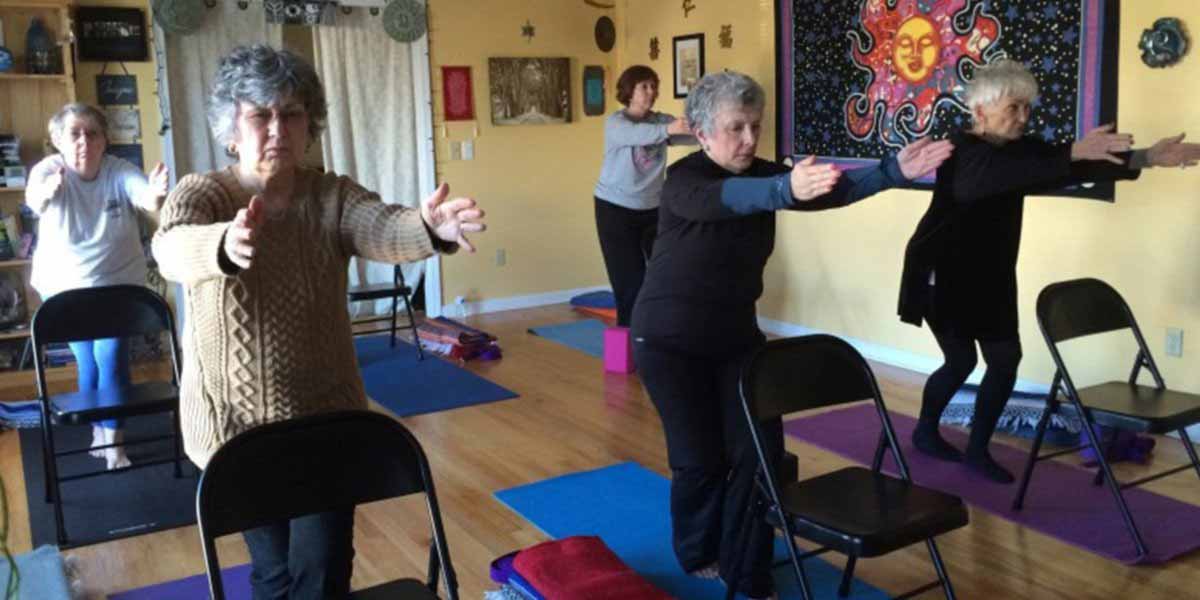
Using a chair for balance during your practice is a safe way to build strength & modify poses ( Image Reference )
Going to your first yoga class can be daunting, but once you get there, you’ll probably find it’s a friendly and welcoming space! However, this brief overview of what you can expect may help put your mind at ease:
Comfortable and somewhat fitted clothing are ideal for yoga as many forms require you to bend and stretch into different poses. For this reason, baggy clothing is generally not a good idea!
However, any type of exercise pants or leggings works well, along with a fitted top. Yoga is generally done barefoot, although non-slip yoga socks are available.
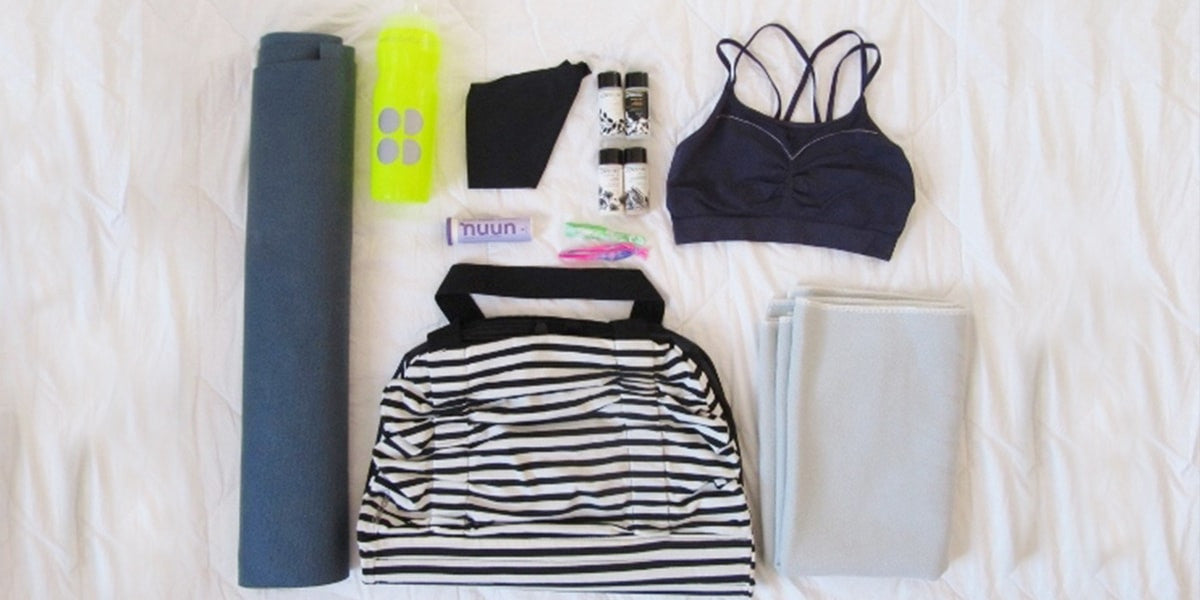
Yoga class essentials include your mat, water bottle, towel, and bag ( Image Reference )
You can turn up to your first yoga class empty handed if you wish, but you may want to consider bringing some of the following items:
This varies from venue to venue, but general yoga etiquette tips include:
A growing body of scientific research is beginning to confirm what yogis have known for millennia - yoga offers a wealth of benefits for everyone…and seniors are no exception!
Some of the health benefits associated with regular yoga practice include:
Although yoga isn’t the first activity that comes to mind when you think of weight loss, studies show it may actually help offset weight gain and promote weight loss. Yoga increases your heart rate, burns fat, and builds muscle. Practicing yoga regularly is a great way to get the exercise you need to speed up any slow metabolism symptoms that may be causing weight gain.
The importance of good balance for seniors should not be underestimated. Not only is it one of the first things we start to lose as we age, it’s key to preventing falls - the leading cause of injury and death among older adults.
The slow and precise movements of yoga, along with its strengthening and challenging poses, help maintain balance, improve posture, mobility, and agility into old age.
Chronic pain is common among older adults, particularly the pain associated with arthritis and joint problems - but yoga can offer some natural relief.
A 2001 study conducted at Harbor-UCLA Medical Center looked at the effects of yoga on those with chronic pain, caused by conditions such as osteoarthritis and migraines.
Participants took part in 90-minute yoga sessions three times a week for four weeks, before being asked to rate their moods and severity of their pain. Most of the participants experienced decreases in pain, with many being able to reduce their intake of pain medications.
Since then, several other studies have had similar results: 2013 research reports that yoga may be able to to decrease pain, improve mobility, and enhance overall health in older adults; and a 2015 study highlighs its ability to ease pain and improve vitality and mood in sedentary adults with arthritis.
Many older adults have trouble falling asleep, and get less than the recommended 7 to 9 hours a night.
Regular yoga sessions may provide a safer alternative to medications, which aren’t without their side effects.
Recent research found that seniors with insomnia experienced significant improvements in overall sleep quality, fatigue levels, and general well-being with regular yoga practice. Other studies have shown that older adults in nursing homes who practice yoga enjoy improved quality of life and sleep quality.
Yoga is well known as a gentle yet effective exercise for increased strength and flexibility. By using your own bodyweight, you can enjoy the benefits of strength training with a lower risk of injury.
People with rheumatoid arthritis, and those without it, were both found to enjoy increased hand grip strength following yoga.
And in a review of 18 studies, yoga was found to increase strength, aerobic fitness, and a sense of good health in older adults.
Fluctuating blood sugar levels are an issue for many people, but over time it can lead to a variety of health issues - including type 2 diabetes. Get yours under control through a healthy diet and exercise regimen.
In one study, patients aged 30 to 60 with type 2 diabetes were asked to take part in 40 minutes of yoga daily, for 40 days. The majority of participants showed a significant decrease in fasting blood sugar levels at the end of the study.
Thanks to its combination of breathing exercises and relaxation postures, yoga may be able to improve lung function.
Specific chair yoga exercises were used on 86 people with asthma to help control episodes of breathing difficulties - with 70% of the episodes being relieved within 30 minutes. Many of the patients were able to use the techniques they learned to manage future episodes instead of reaching for their medications.
According to the National Osteoporosis Foundation, half of all adults age 50 and older are at risk of breaking a bone. Weight-bearing activities - such as yoga - are key to preserving bone mass. Its low-impact poses and stretches can help prevent osteoporosis or provide pain relief from existing bone problems.
A 2009 study indicates yoga’s ability to build bone density over a two-year period in seniors with osteoporosis or osteopenia.
It’s important to look after your joints too! Yoga practice can increase fluid between the bones, lubricating the joints and helping prevent or manage carpal tunnel syndrome and arthritis.
Did you know that one in three US adults suffers from high blood pressure, or hypertension - a serious condition that can increase your risk of heart attack, stroke, or kidney failure?
While reducing salt intake is one sure-fire way to lower your risk, yoga is another.
When adults with mild to moderate high blood pressure began practicing yoga daily, researchers discovered a decrease in their levels of blood pressure, blood sugar, cholesterol, and triglycerides after just three months.
More impressively, a review of 17 studies reported significant reductions in blood pressure thanks to three core principles of yoga: postures, meditation, and breathing.
Yoga doesn’t just benefit the body - it has a profound impact on our mental and emotional health too. It relieves stress and lowers cortisol levels.
It’s thought that the slow, controlled breathing which is central to yoga practice decreases nervous system activity, allowing a sense of calm to flood the body and mind.
A 2014 study reports that people with stress-related symptoms who began practicing yoga experienced feelings of calmness, along with greater self-awareness and self-esteem.
This builds on 2010 research showing that a 12-week yoga intervention provided greater improvements in mood and anxiety than going for a walk.
Keep your mind sharp as you age simply by moving your body!
Research has found that yoga can boost both brain function and cognitive ability in older adults. Practicing hatha yoga 3 times weekly for 2 months was shown to improve cognitive ability in sedentary seniors. They demonstrated more accurate scores on tests of information recall, mental flexibility, and task-switching.
A wealth of research exists to suggest socialization increases life expectancy.
Getting out and active with others in your area at a local yoga class can help establish a sense of community and friendship.
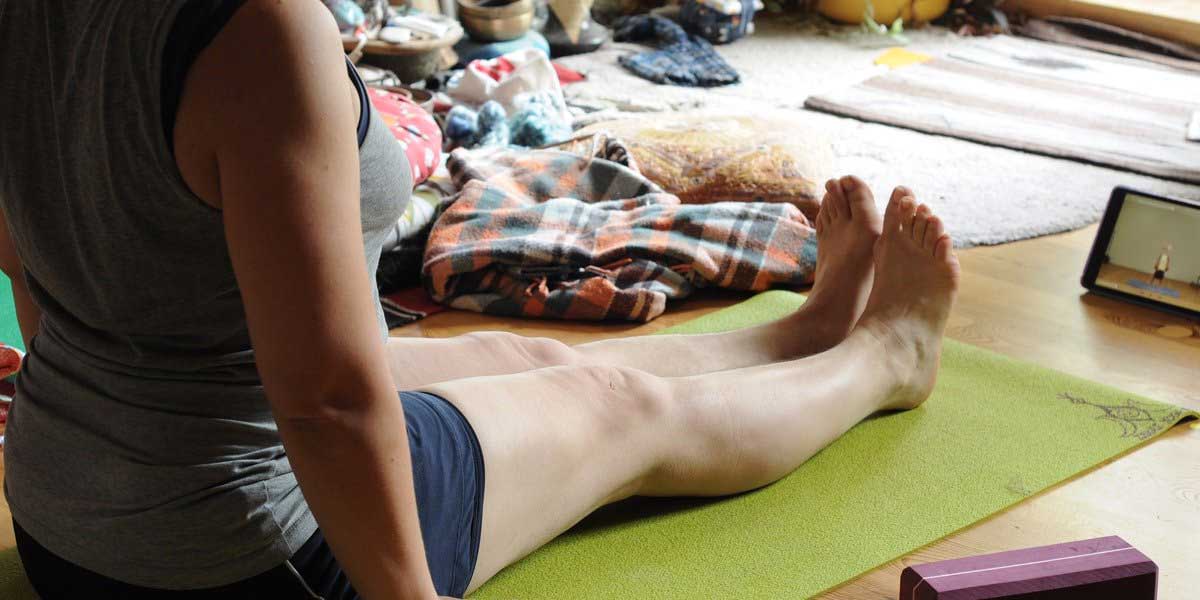
Use yoga DVDs or search youtube for videos to follow along & practice yoga at home ( Image Reference )
If you can’t find a class in your area, or would simply rather practice from home, it’s possible to do this.
However, you should be aware that your risk of injury is higher, and you may not be performing postures correctly, which can put undue strain on your back, hips, and other joints.
Many books and DVDs are available to help you learn yoga postures, or you can make your own flow with the poses outlined in the next section.
Youtube is flooded with yoga flows designed for seniors. Do a search of your own or check out the following links that may be helpful for beginners who wish to practice from home.
Some of the best poses for beginners and seniors are detailed below. Remember to only go as far as you can with each of the postures. Every pose can be modified to meet your needs, but it's good to consider getting professional instruction rather than going it alone.
Remember to discuss with your physician for approval before beginning your new yoga regimen.
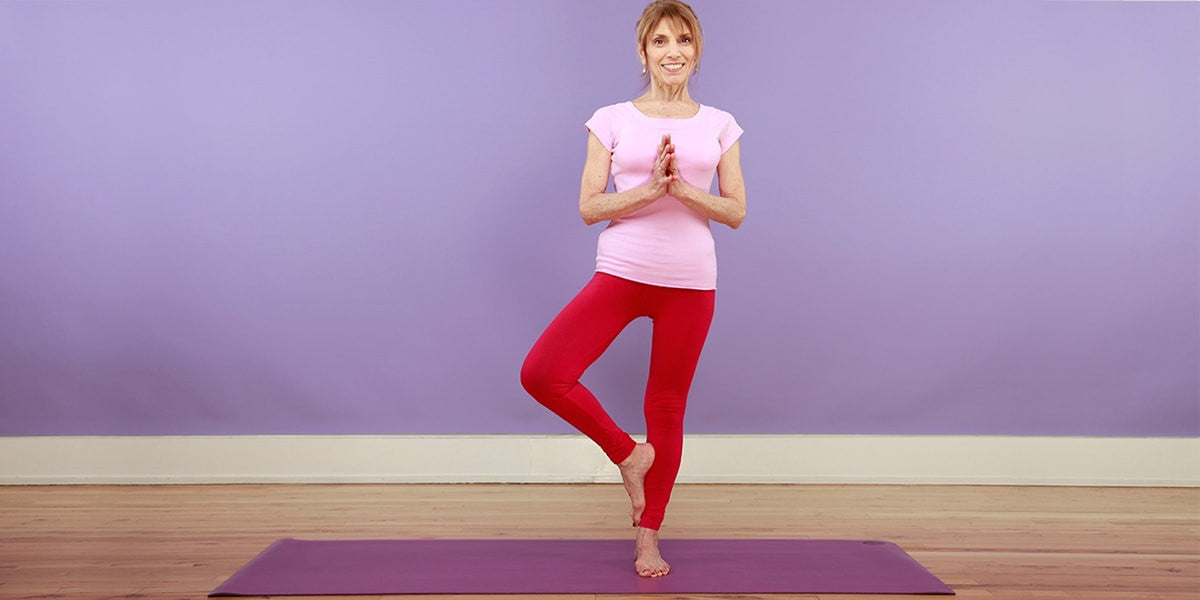 Tree post helps improve balance and build strength ( Image Reference )
Tree post helps improve balance and build strength ( Image Reference )
Watch a video of the Tree Pose
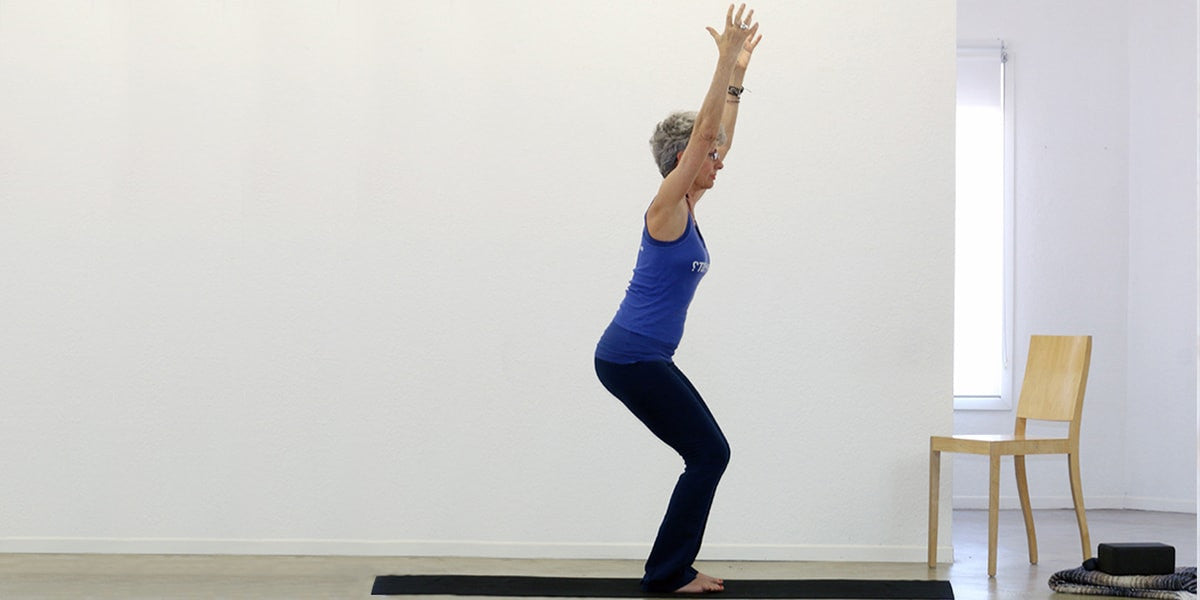 The Chair Pose improves posture by lengthening the spine and builds strength in legs & core( Image Reference )
The Chair Pose improves posture by lengthening the spine and builds strength in legs & core( Image Reference )
Watch a video of the Chair Pose
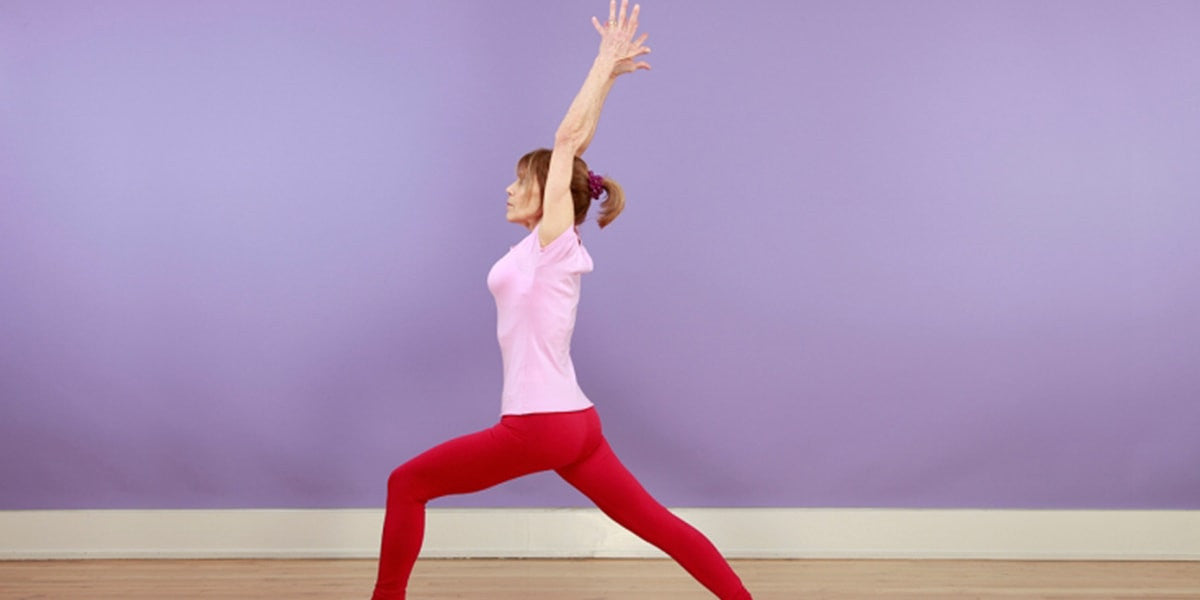 Warrior 1 is a commonly used pose that helps to build strength and balance ( Image Reference )
Warrior 1 is a commonly used pose that helps to build strength and balance ( Image Reference )
Watch a video of the Warrior 1 Pose.
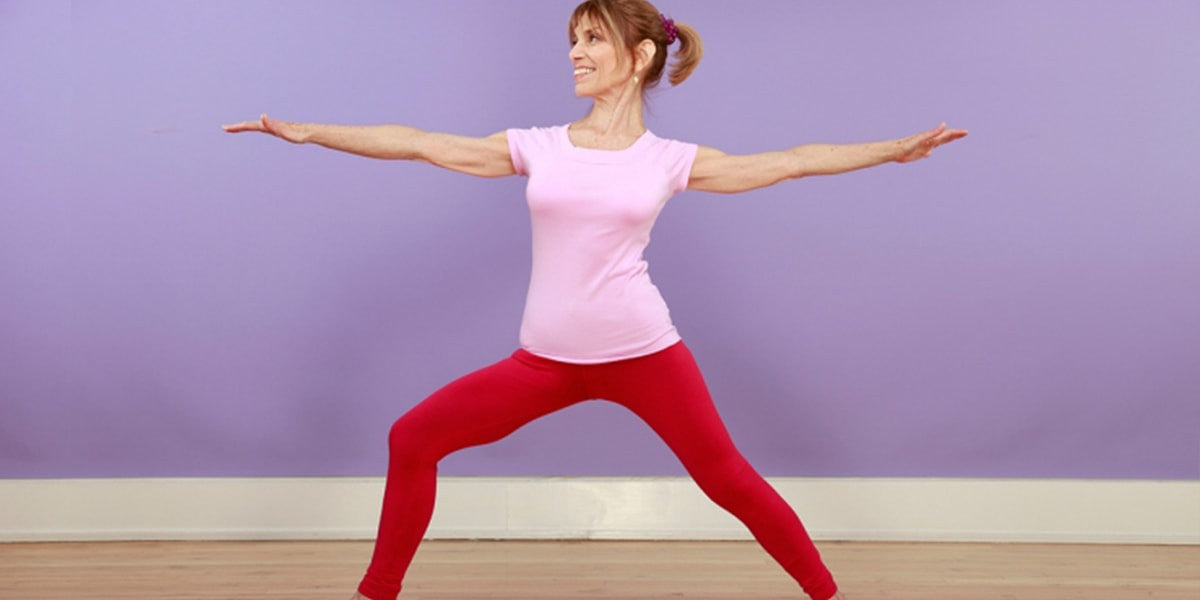 Warrior 2 is a great pose to strengthen legs and ankles ( Image Reference )
Warrior 2 is a great pose to strengthen legs and ankles ( Image Reference )
Watch a video of the Warrior 2 pose.
 Child's pose is often used for resting when transitioning between more challenging poses ( Image Reference )
Child's pose is often used for resting when transitioning between more challenging poses ( Image Reference )
Watch video of child's pose
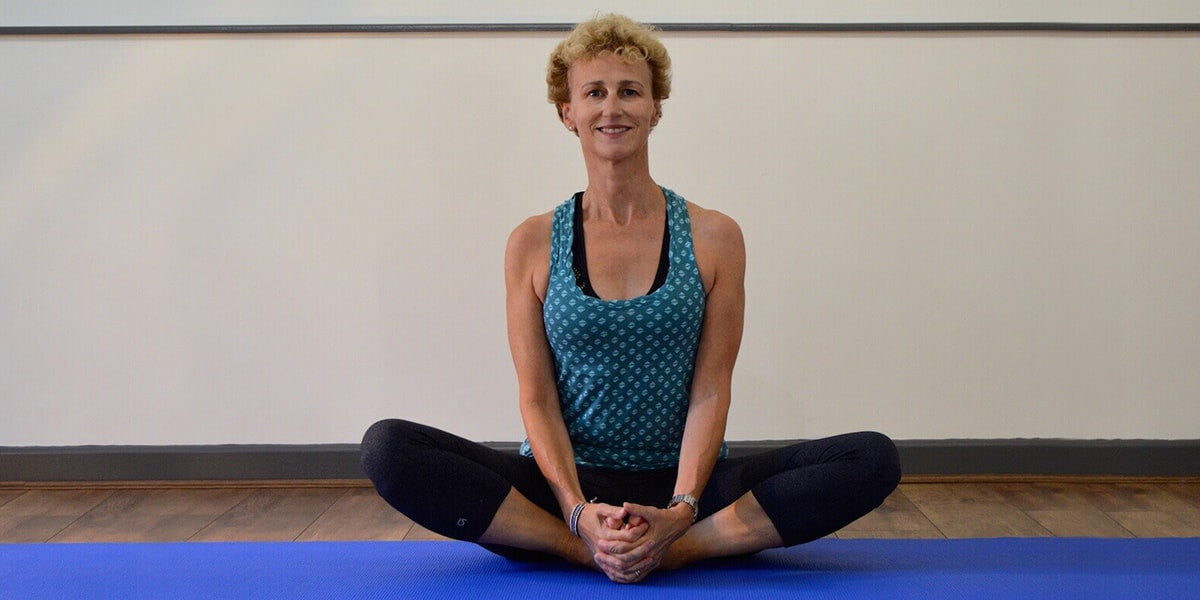 The Cobbler pose is great to improve flexibility while opening your hips and groin ( Image Reference )
The Cobbler pose is great to improve flexibility while opening your hips and groin ( Image Reference )
Watch a video of the Cobbler’s Pose.
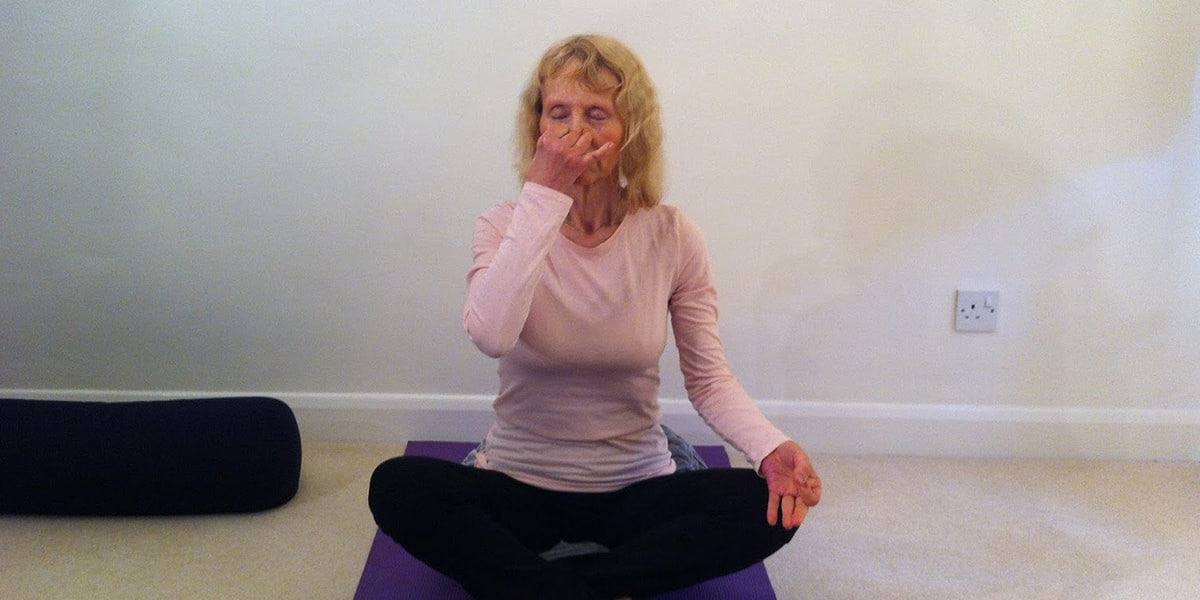 Practicing alternate nostril breathing can help to relieve fatigue ( Image Reference )
Practicing alternate nostril breathing can help to relieve fatigue ( Image Reference )
Watch a video of Alternate-Nostril Breathing here.
Clearly, yoga is deserving of its reputation as a calming and healing experience. Not only is there a whole host of physical and mental benefits to be gleaned from regular yoga practice, there are a variety of yoga types suitable for seniors of all abilities - whether practiced in a group setting or at home.
Remember to discuss yoga with your doctor before beginning, particularly if you are not very active, or if you have any specific health conditions.
Namaste!
Leave a comment